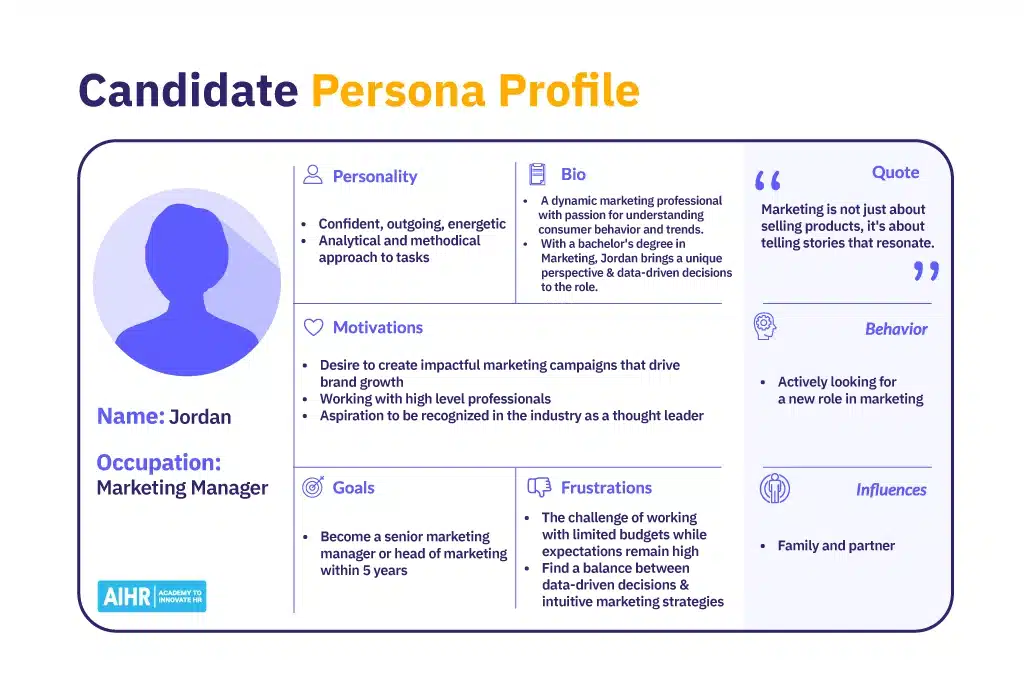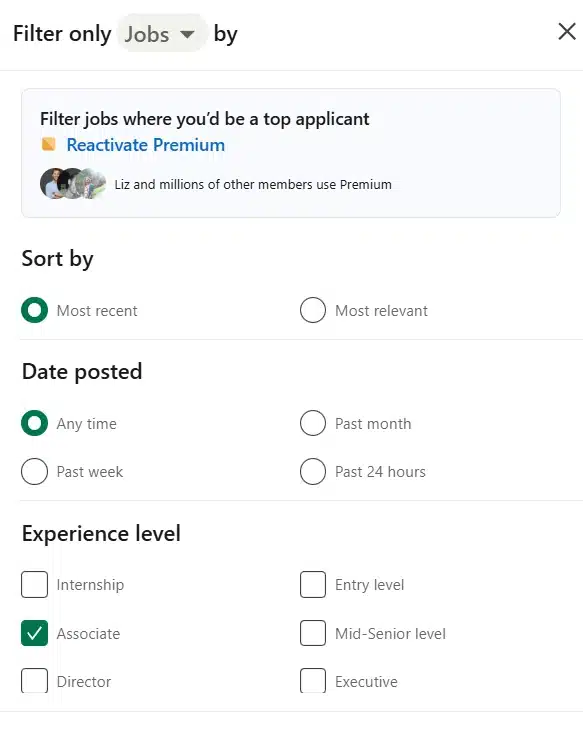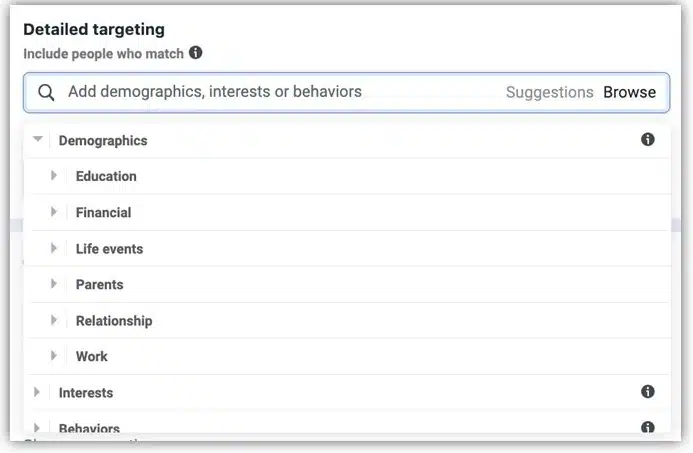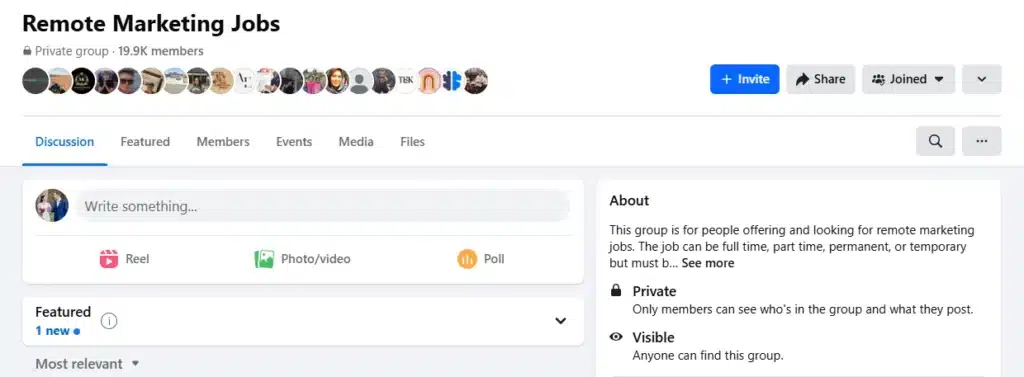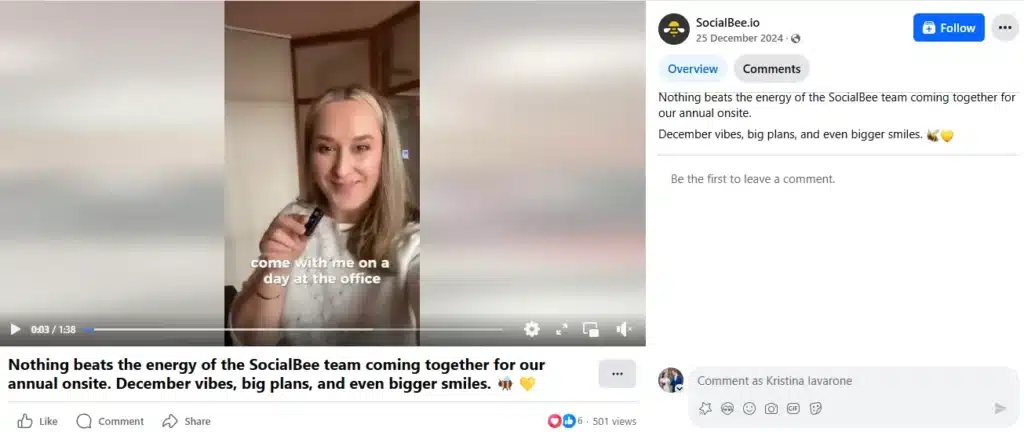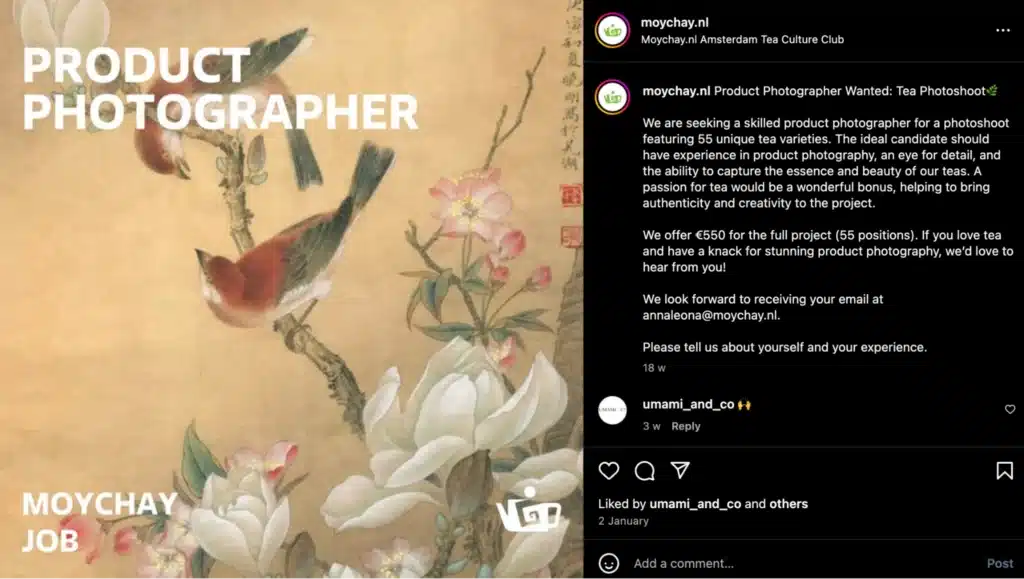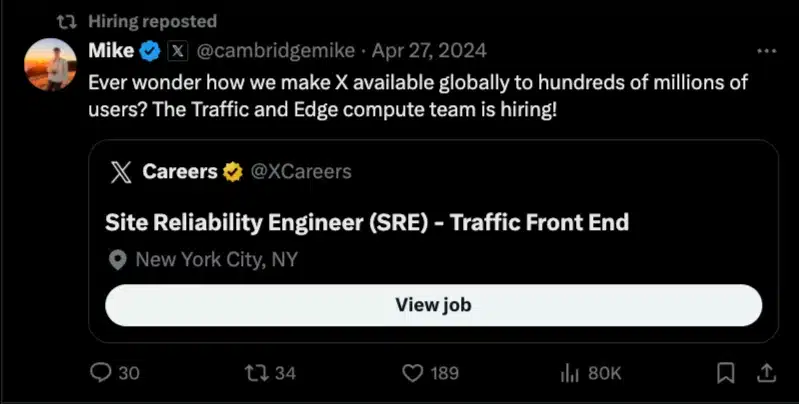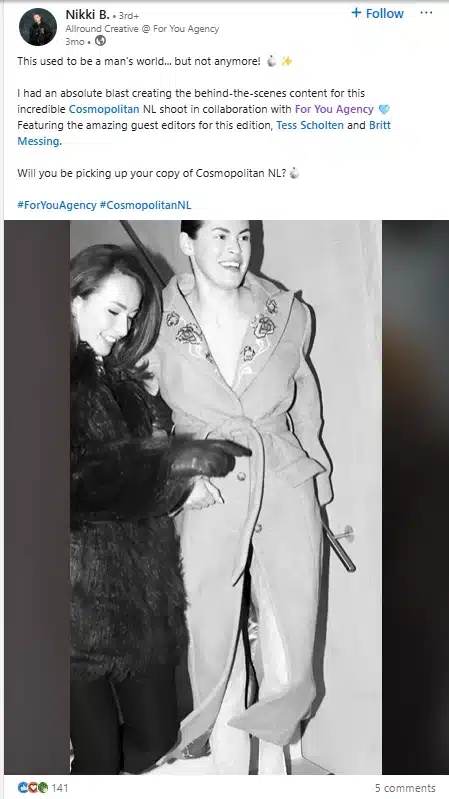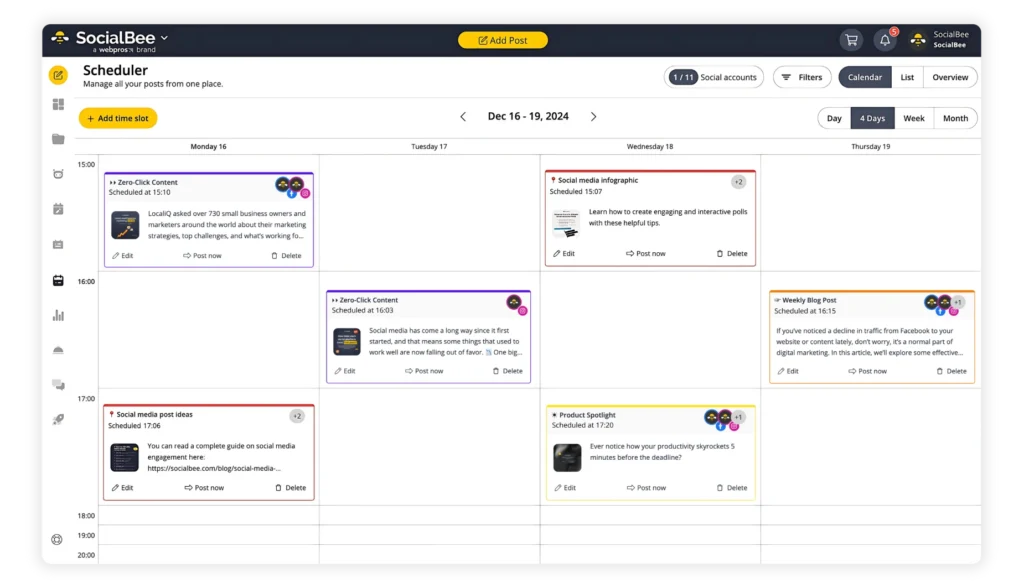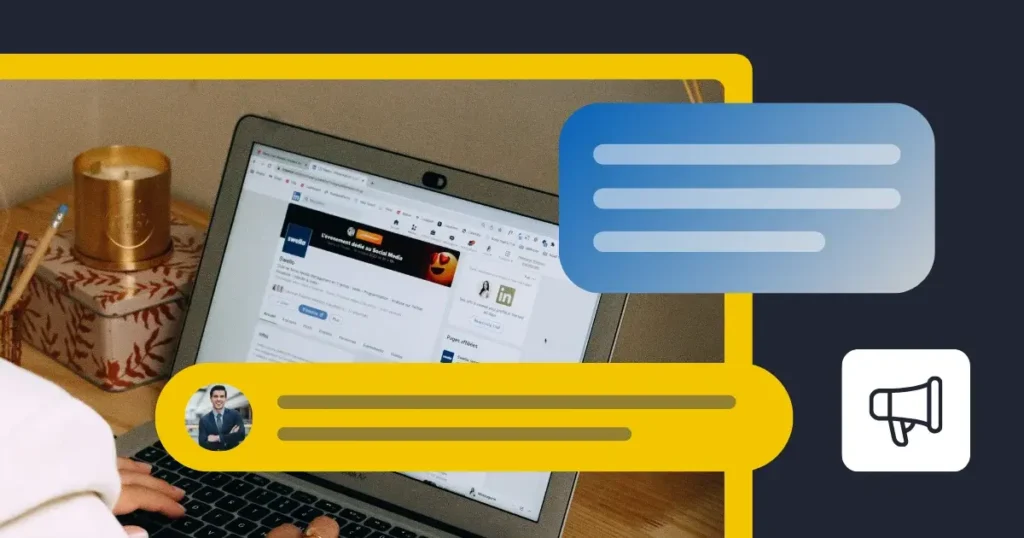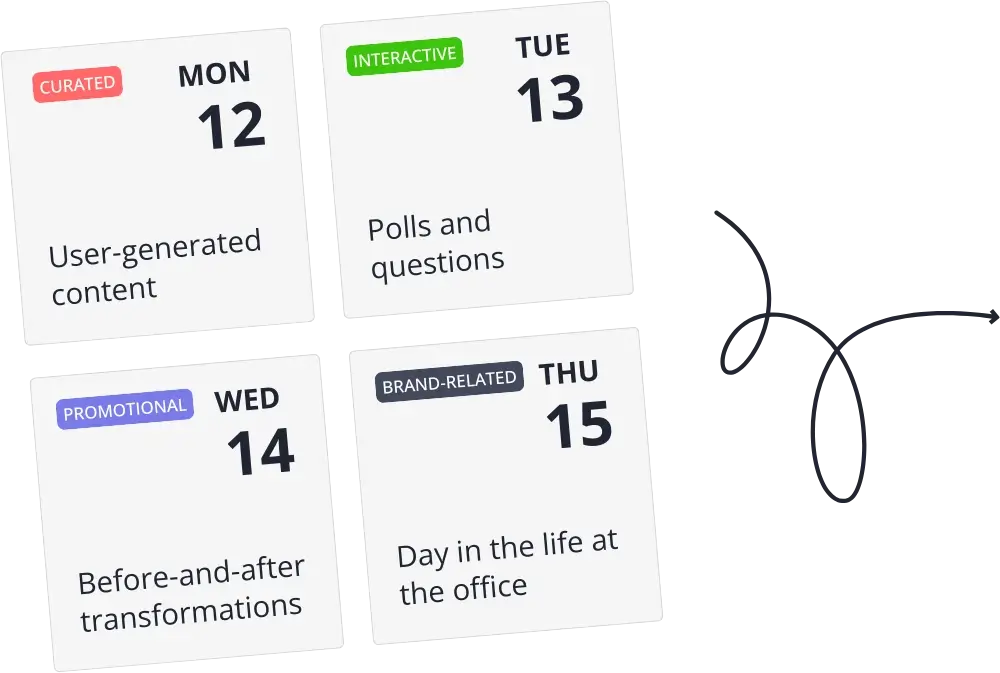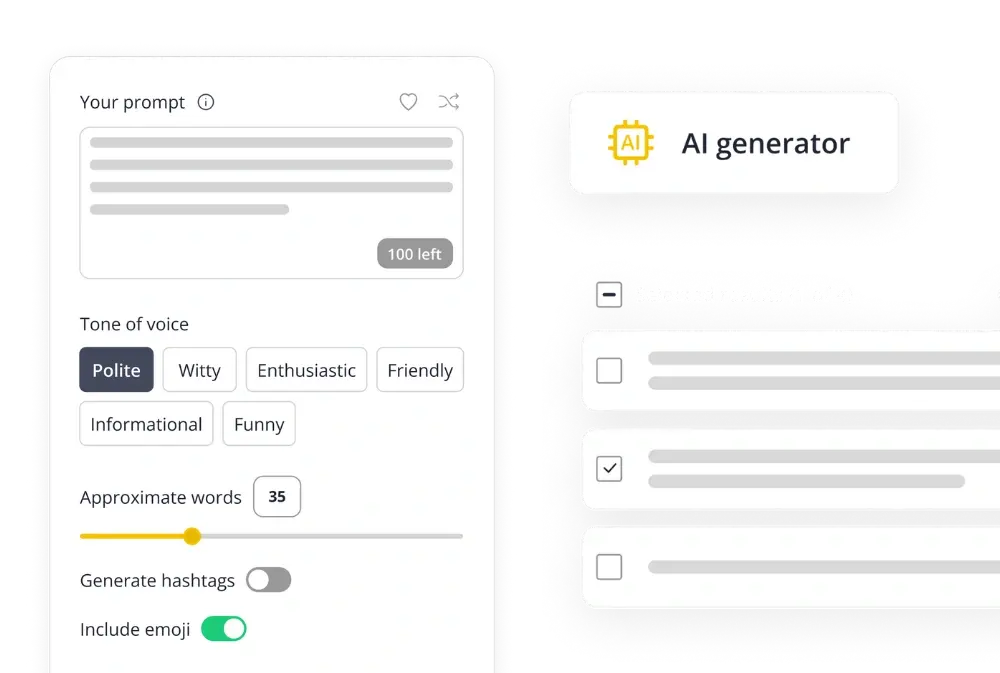
Guest Author
Scrolling through Instagram. Liking a post on LinkedIn. Watching a company culture short on YouTube. That’s where today’s (active and passive) job seekers are. And where your next hire might be.
Social media recruitment has changed the game for hiring professionals. Instead of relying solely on job boards and other traditional recruitment methods, you can now reach active and passive candidates through multiple social media platforms like LinkedIn, Facebook, Instagram, and X. It’s not just about visibility, it’s about connection with your target audience.
A solid social media recruiting strategy helps you promote job openings, highlight your company culture, and attract more qualified candidates faster.
This article shares quick wins and smart tactics to strengthen your social media presence, lower recruitment costs, and grow your talent pool with the right candidates.
We’re SocialBee LABS SRL, part of WebPros. We use the information you provide to share relevant content and product updates, as outlined in our Privacy Policy. You can opt out anytime.
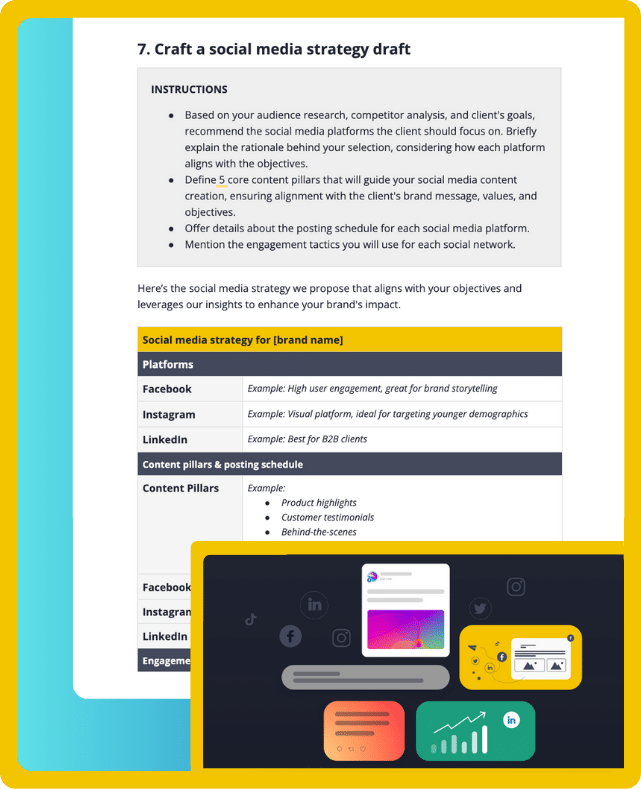
Short Summary
- Know your audience. Before you post anything, be clear on who you’re trying to reach. The better you understand your ideal candidate, the easier it is to write something that grabs their attention.
- Pick the right platforms. Don’t try to be everywhere. Focus on the social media platforms your target candidates actually use, whether that’s LinkedIn for experienced professionals or Instagram for creative roles.
- Show what it’s like to work with you. People want to see the real stuff: team photos, behind-the-scenes moments, what your company stands for. A polished employer brand is great, but authenticity connects.
- Get your team involved. When employees share job openings or talk about their work experience, it feels more trustworthy. Their posts often reach passive candidates who aren’t checking job boards but might still be open to something new.
- Track and learn. Keep an eye on which posts perform best, which platforms bring in strong applicants, and where engagement is coming from. Then use that data to do more of what works.
Why use social media for recruitment?
Social media has transformed the way companies connect with potential employees. What was once a space for casual interaction is now a powerful tool for reaching both active and passive candidates.
Using social media platforms for hiring isn’t just a trend, it’s a strategic advantage that helps businesses attract top talent, showcase their company culture, and streamline the hiring process.
Here are some of the reasons why you might want to have a social media recruiting strategy:
- Connect with both active and passive candidates on multiple social media platforms
- Post job openings quickly and cost-effectively
- Build your employer brand and showcase company culture
- Target the right candidates across different social media channels
- Attract more qualified candidates compared to traditional job boards
- Engage passive candidates through dedicated pages, profiles, and direct messages
- Tap into a wider talent pool and find the best talent faster
- Reduce recruitment costs by leveraging multiple platforms
- Strengthen your company’s reputation and stand out to job seekers
How to use social media for your hiring process
Want to attract better candidates, faster? Use social media to actively promote your open roles, highlight what it’s like to work at your company, and get your team involved in spreading the word. Share authentic content, post consistently on the platforms your target candidates use, and monitor what’s performing well to adjust your strategy accordingly.
Tips for using social media for recruitment:
- Understand your target audience
- Choose the right social media platforms
- Create a compelling employer brand
- Make use of employee advocacy
- Cross-promote job openings across channels
- Track performance and adjust your strategy
1. Understand your target audience
Don’t post your job adverts on social media right away. First, you have to understand the qualities and characteristics of your audience. You can adjust your messaging when you know who you’re targeting. This allows you to attract candidates who aren’t only qualified, but also passionate about your industry and values.
Here’s what you have to know about your next hire:
- What motivates our ideal candidates?
- What challenges are our candidates currently facing in their current role?
- What’s the typical professional background of our target audience?
- What are the personality values and traits that our organization seeks?
You might want to create a candidate persona. This is a semi-fictional representation of your ideal candidates. It helps guide your recruiting strategies. It doesn’t only describe their qualifications. It gives you an insight into their communication style, motivations, and personality type.
Let’s say you’re looking for a marketing assistant with a marketing degree and strong communication skills. Then, you should only interview people with this educational background and skills. You can find potential candidates via cold emails or via social media platforms.
2. Choose the right social media platforms
Before posting on social media, you must determine where your audience is active. This is essential to helping you communicate with prospective candidates.
For example, some audience groups might only use Instagram, while others are more likely to engage with companies via LinkedIn.
Let’s take a look at the most popular social media platforms for recruitment:
- X (formerly Twitter)
LinkedIn can be an effective recruiting tool. It’s ideal if you’re hiring across industries or need to connect with candidates who have specific skills or professional experience. According to Pew Research Center, “roughly half of adults who have a bachelor’s or advanced degree (51%) say they use LinkedIn.”
The platform is especially useful if you’re looking for candidates with higher education or specialized training. According to Statista, as of early 2025, one-third of American LinkedIn users hold a bachelor’s degree, and 18% have completed a master’s program.
To take your outreach further, tools like LinkedIn Recruiter help you search for candidates based on filters like education, experience, and location. Besides posting job ads, you can message professionals directly and narrow results with advanced search options. This helps ensure your roles reach only the most relevant job seekers.
Tips for LinkedIn:
Here are our tips to help with your recruiting strategy on LinkedIn:
- Optimize your company page. Go beyond the basics. Highlight your values, showcase employee stories, and use keywords to improve visibility in search.
- Join and contribute to LinkedIn groups. Share insights or answer questions in niche groups to build credibility. As Forbes notes, this positions you as a trusted voice while helping you tap into new talent pools.
- Use LinkedIn Events to promote recruiting webinars. Host live Q&As or virtual open house sessions to meet candidates face to face.
- Message passive candidates directly. Craft personalized outreach messages that highlight what’s in it for them, not just what you’re looking for.
- Write clear, candidate-focused job descriptions. Be specific about responsibilities, benefits, and growth opportunities. Include a response timeline and a call to action, like “Message us if you have questions.”
Facebook’s user base is diverse. Statista estimates that it has over 3 billion active users monthly. This is a massive audience for your job listings.
When you share a post, you can use paid adverts. This way, you’ll target only prospective candidates that fit your criteria. This can include, for example, those who live in New York or are between 18 and 30.
You can also find prospective applicants in groups. Enter terms like “content writers for hire” or “remote work opportunities” in the search bar. You’ll receive many group suggestions.
Tips for using Facebook in your social media recruiting:
- Engage with local community groups and niche interest groups. Potential candidates might be active there.
- Write a clear job description that explains the role’s purpose. Include a call to action (CTA) indicating how users can contact you. This could be via email or filling out a contact form.
- Share behind-the-scenes content that reflects your company culture. This can be employee testimonials, office life snapshots, and community involvement.
Instagram is all about visual storytelling. Most of its users are young, and you’ll likely find creative professionals. These include influencers and job seekers attracted by engaging content. This makes the app perfect if you’re in the marketing, fashion, or design industry.
Tips for using Instagram for recruiting professionals:
- Showcase your team in action. Post high-quality images and videos of your workplace, onboarding moments, and team events to highlight your culture.
- Use Reels and Stories to host challenges. Launch creative hiring challenges like “Pitch yourself in 15 seconds” or “Best idea wins an interview.” Great for attracting marketing, design, or media talent.
- Highlight career growth stories. Feature employee journeys, from their first day to promotions, to give candidates a real view of growth potential.
- Create themed series. Try formats like “Day in the life of a [role]” or “3 reasons I love my job” featuring current employees.
- Use niche hashtags and geotags. Combine location-based tags with industry-specific ones to appear in relevant searches (e.g., #designjobsamsterdam).
- Promote roles with visual flair. Turn job openings into shareable, on-brand graphics or short videos with key role details and a CTA.
X (formerly Twitter)
X is a great platform for sharing timely updates about your company and job openings. It’s especially useful if you’re hiring in fast-moving industries or want to position your brand as a thought leader. Use hashtags to join trending conversations, post updates on hiring events, and respond directly to candidate questions in real time.
Tips for using X to target candidates for your open roles:
- Use hashtags tied to roles or locations. For example, #hiringdevelopers or #londonjobs can help your post show up in relevant searches.
- Post time-sensitive updates. Share when applications close, link to newly posted roles, or highlight upcoming virtual hiring events.
- Engage with niche accounts and threads. Join conversations where your ideal candidates already spend time. React to industry news and add value, don’t just post jobs.
- Pin job tweets. Keep your most important job opportunity at the top of your profile so new visitors see it first.
To use social media for recruiting, you must tailor your messaging to match the tone and expectations of each social platform’s audience.
While content style varies by platform, what matters most is that your messaging reflects your brand. Whether it’s a formal post on LinkedIn or a playful reel on Instagram, consistency in tone, visuals, and values is what drives real engagement.
3. Create a compelling employer brand
An authentic employer brand is key to attracting top talent. Your brand should communicate your company’s mission, values, and culture. This helps you resonate with potential candidates.
What distinguishes your organization from companies ABC and DEF? Make sure to highlight this in your social media posts. This could be your commitment to diversity and inclusion. Or, you may offer learning opportunities to help your employees achieve professional goals.
To build an authentic brand presence on social platforms, consider these factors:
- Consistency: Ensure that your brand message, tone of voice, and visual style remain consistent across all platforms. This means using the same language, aesthetic, and values whether you’re posting on LinkedIn or TikTok. Consistency builds brand recognition and trust, and more importantly, it helps candidates connect with who you truly are as an employer.
- Engagement: Engage with your audience through authentic, two-way interactions. Reply to comments, host live Q&As, and encourage user-generated content (UGC) – like testimonials, photos, or employee shout-outs. When that content reflects your brand’s tone and values, it feels more real and trustworthy. According to Forbes, this kind of social proof resonates because people trust people more than polished marketing.
- Transparency: Share both highlights and behind-the-scenes content to humanize your brand. This could include day-in-the-life posts or interviews with team members.
In this video, Washington University in St. Louis doesn’t just talk about its values, it shows them. From patient care to research and teaching, the video gives a real sense of what the university stands for. It feels honest and grounded, which makes it easier for people to connect with the message.
In 2024, Cosmopolitan teamed up with an agency to shoot some behind-the-scenes content for a photoshoot. Instead of just posting the final product, they gave people a look at the creative process. It’s the kind of content that feels more personal and relatable, something potential candidates can easily connect with when scrolling through LinkedIn.
4. Make use of employee advocacy
Your current team can be your most powerful recruitment tool. When employees share their experiences, tag your social media pages, or repost job openings, it feels more real—and that authenticity builds trust. It promotes your employer brand in a way no ad ever could, reaching not only active job seekers but also passive candidates who might be open to new opportunities.
Here’s how you can encourage and support employees to advocate for your brand on social media:
- Make it easy to participate: One of the biggest blockers is time. Provide ready-to-use templates like caption starters, branded visuals, and suggested hashtags.
- Share regular content updates: Keep employees in the loop with company wins, open roles, and milestones they can easily share or comment on.
- Use spotlights and shout-outs: Acknowledge employees who contribute on social. Use employee spotlights, team photos, and success stories to celebrate their impact.
- Incentivize referrals: Offer rewards like gift cards or bonuses when employees refer successful candidates, especially helpful when hiring in competitive industries.
- Train your team: Host quick tutorials or share best practices for posting professionally while staying authentic.
- Showcase stories and testimonials: Encourage team members to share their personal experiences. Use video or written formats to bring these stories to life, especially for job posts or career pages. Authentic testimonials build emotional connection and help job seekers envision themselves on your team.
Free tools or consistent templates can ensure a clean, on-brand look, great for remote or global teams too, without the high cost of professional headshots.
5. Cross-promote job openings across channels
If you’re only posting your job openings on one platform, you’re likely missing out on a big part of your potential talent pool. People use different social networks for different reasons, and that includes job hunting.
Some might actively search for roles on LinkedIn, while others might stumble across your opening on Instagram or Facebook because they’re already engaging with your brand. That’s why cross-promoting your open roles across channels is one of the most effective ways to boost visibility and attract a wider, more diverse pool of candidates.
But cross-promotion doesn’t mean copying and pasting the same message everywhere. Each platform has its own tone, content format, and expectations.
What works on LinkedIn, a detailed, professional job description, might feel too stiff or out of place on Instagram, where visuals and storytelling perform better. TikTok might be a place to show off your office vibe or team culture, while X (Twitter) is better for short updates and quick replies. The key is to tailor your message without losing your brand voice.
Think of it as building a mini campaign for each open role. Here’s what that might look like:
- Start with a main post on LinkedIn, with the official job description and a strong introduction to the role.
- Follow up on Instagram with a carousel showing team photos, a quote from a current employee, or even a short “day in the life” video.
- Use Stories or Reels to answer FAQs or give a quick office tour.
- Post a behind-the-scenes clip on TikTok to show personality and reach a younger crowd.
- Pin the job post on X and retweet it over the next few weeks while engaging in relevant threads.
- Update your Facebook page with the opening and encourage your current employees to share it.
Managing job posts across multiple platforms can quickly become chaotic, especially if you’re juggling other marketing or HR tasks at the same time. That’s where a tool like SocialBee comes in handy. Instead of hopping between apps, you can plan, write, and schedule all your job-related content in one place.
Want to tweak the caption slightly for each platform? You can do that. Want to automatically recycle posts for roles that are always open? Easy.
SocialBee also lets you organize your posts into categories, so you can group everything related to hiring, employee spotlights, or company culture. That way, you’re not just promoting open roles, you’re building a story around them.
6. Track performance
Looking for talent on social media channels can be effective. But you have to check key metrics to determine what’s working and what needs improvement. You can use social media in combination with an applicant tracking system to gather all metrics and candidates in one place. This lets you adjust your strategies and make better data-driven decisions.
Here are key metrics to track when using social media for recruitment:
- Application rates: Track how many job applications you receive from social media posts. This tells you which platforms are the most effective for attracting high-quality candidates.
- Cost per hire: Analyze the financial efficiency of your social media recruitment campaigns. Compare the cost of paid promotions to the number of hires. Then, you can optimize your budget.
- Time to hire: Track the time it takes from posting the job advert to hiring a candidate. This will give you insights into how effective your recruitment process is.
- Quality of hire: Test the performance and retention of hires coming through social channels. This information assesses whether your strategy is attracting the right talent.
Frequently asked questions
Yes, and the numbers back it up. Over 82% of companies use social media to recruit talent, and 57% of job seekers say they use social media in their job search. Platforms like LinkedIn, Facebook, and even Instagram allow employers to reach both active and passive candidates, often at a lower cost than traditional job boards. Social recruiting also helps build employer brand and engage candidates who are a better cultural fit.
Yes. Social media can enhance diversity and inclusion in hiring. Make sure you respect the candidates’ privacy and that the job posts and interactions are unbiased. This includes using gender-neutral language. Avoid referring to someone as “he” or she” and use inclusive job titles. For example, write “chairperson” instead of “chairman” and “firefighter” instead of “fireman.“
Before hitting “post” on a job ad, it’s worth running through a quick checklist. These questions help you make sure the content is accurate, brand-aligned, and reaching the right people, so you’re not just posting for the sake of it.
Before using social media for recruitment, ask yourself:
- Is the job description clear and easy to understand?
- Does the post reflect our company culture and values?
- Are we targeting the right audience on this platform?
- Are we following inclusive hiring and equal opportunity guidelines?
- How will we track the success of this post (clicks, applications, conversions)?
These questions make sure your post isn’t just out there, it’s working. And they help you pick the right tools to measure what matters, like who’s applying and how well the content is performing.
Time to shape your social media recruitment strategy
Posting on social media channels opens up all kinds of opportunities to connect with the right candidates, you just need a plan that works for your team. Focus on sharing content that reflects your values, your wins, and what it’s really like to work at your company. A behind-the-scenes photo, a quick employee shout-out, or a post about a recent success can go a long way in building a social media presence that feels both credible and relatable.
Don’t forget to invite your employees into the process. When your team shares their experiences or helps spread the word about job openings, your message gets seen by more people, and often by passive candidates you wouldn’t reach through a traditional job board.
If you’re ready to take the next step and bring some structure to your social media recruiting strategy, SocialBee can help. You can plan your content, write captions with AI, and track what’s working, all in one place.
Start your 14-day free trial today and see how much easier recruitment can be when your social media works for you.
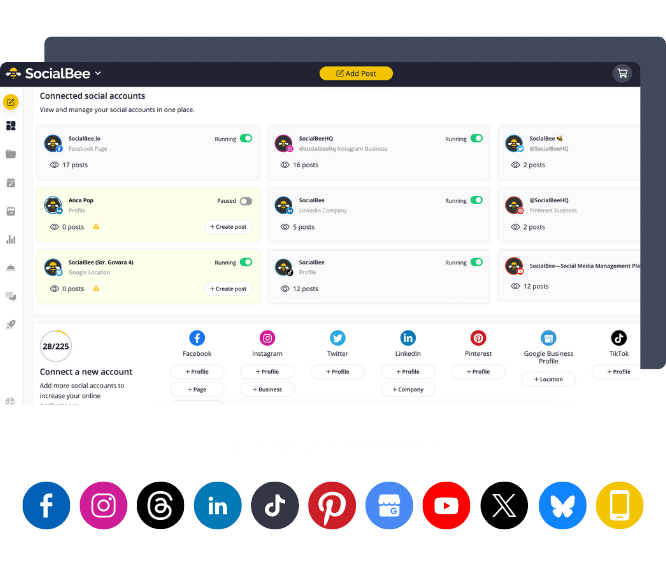
About the author: Guillaume is a digital marketer focusing on content management at Wordable and Digital PR at uSERP. Outside of work, he enjoys his life in sunny Mexico, reading books, wandering around and catching up with the latest shows on TV.

